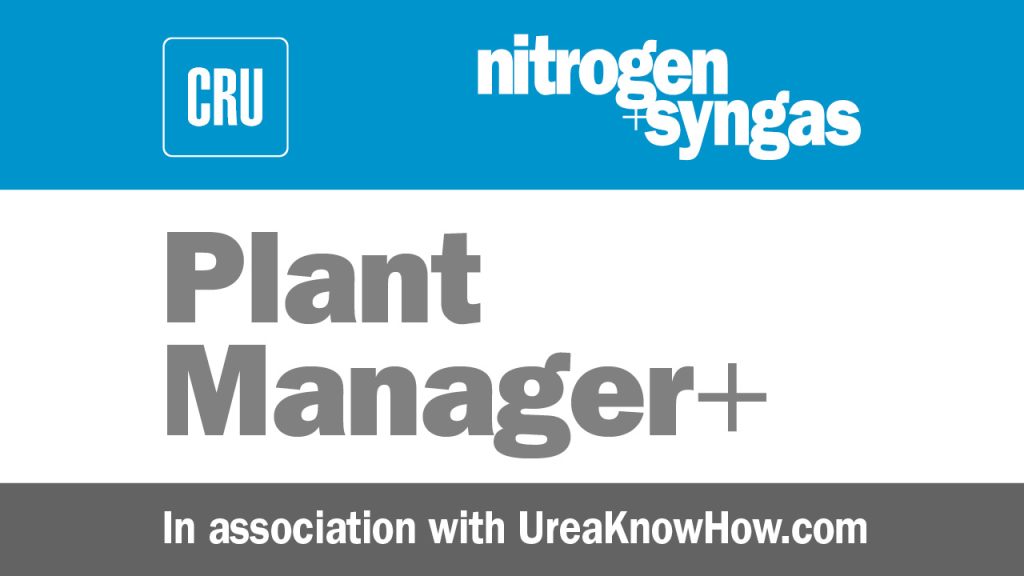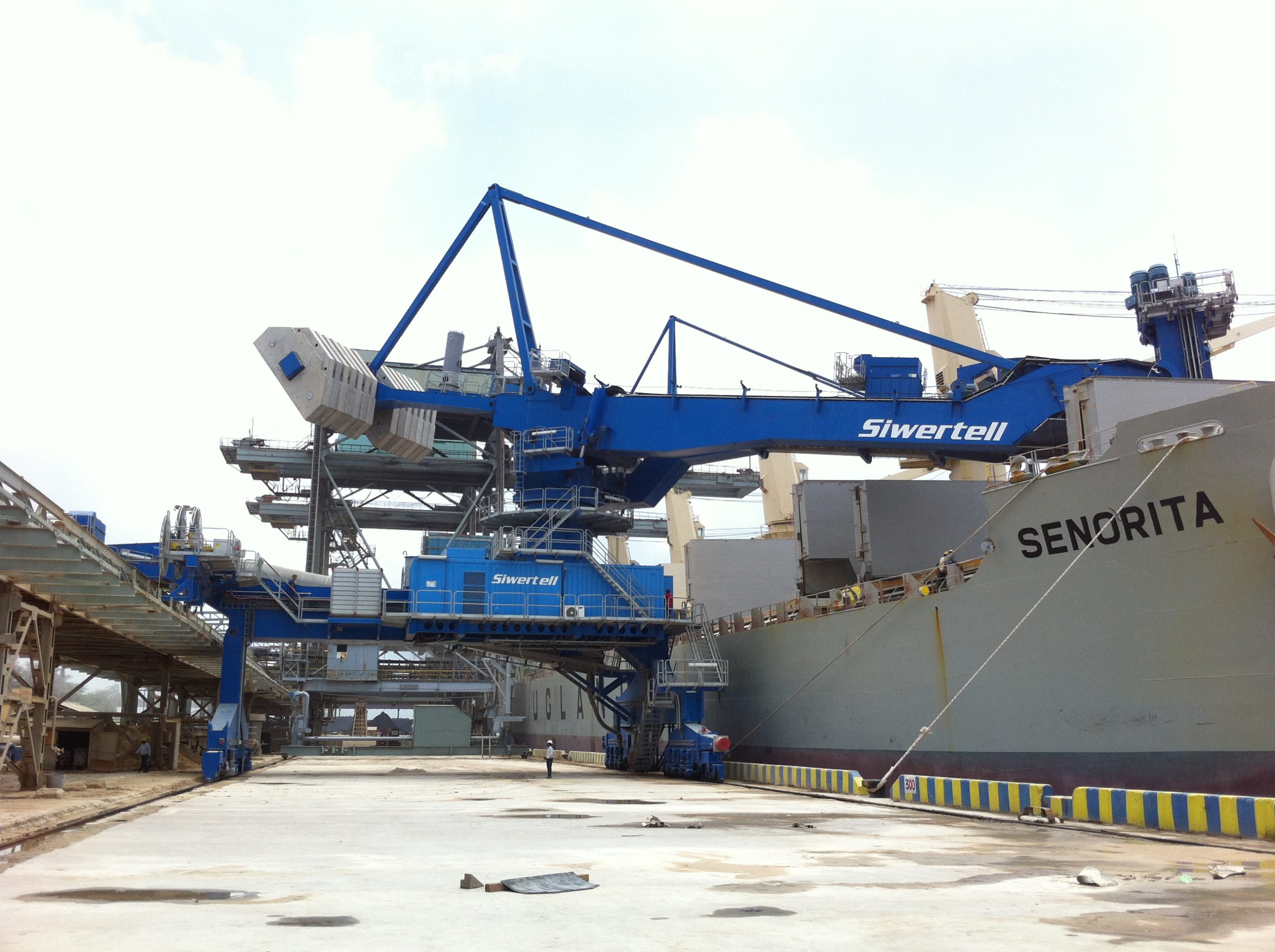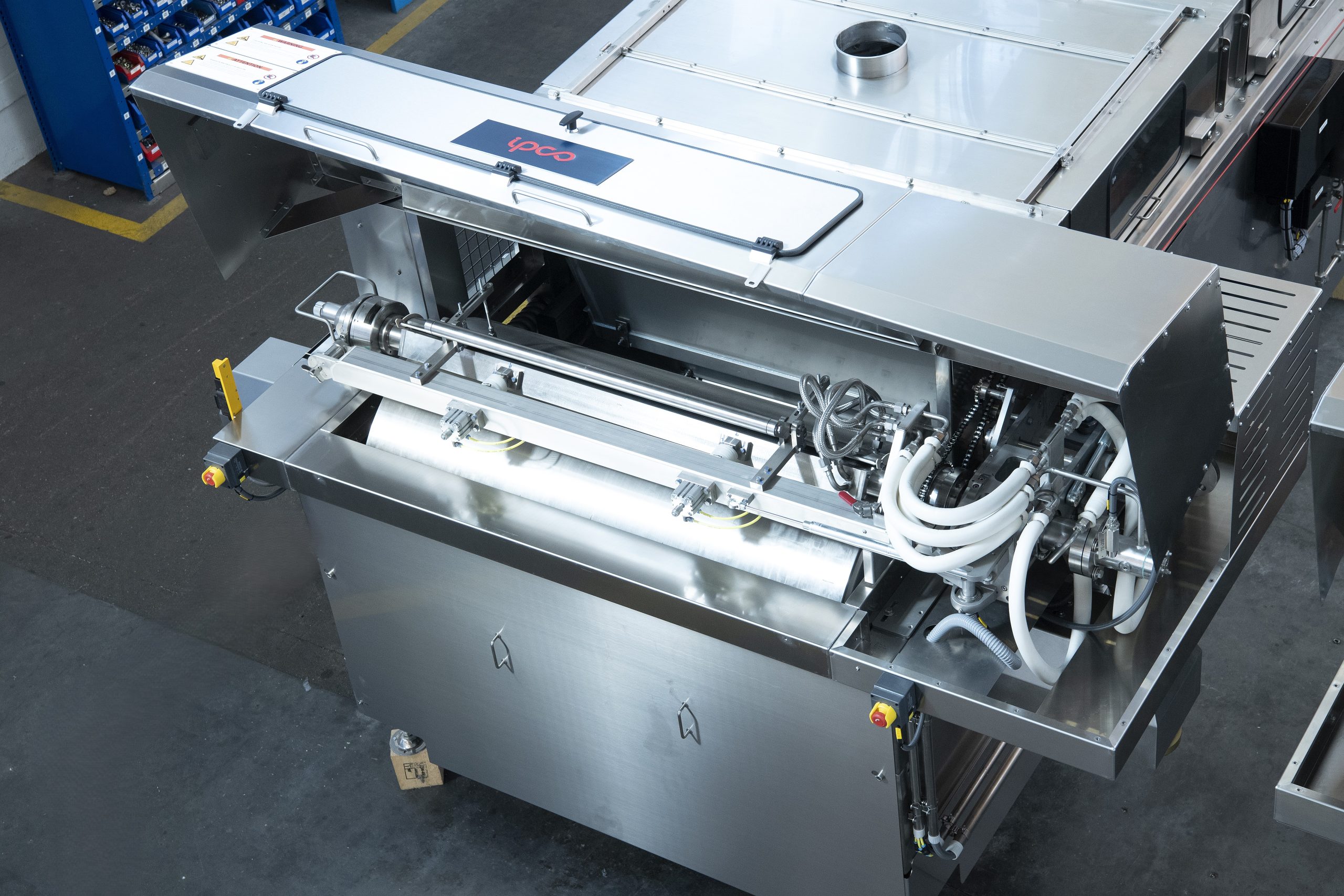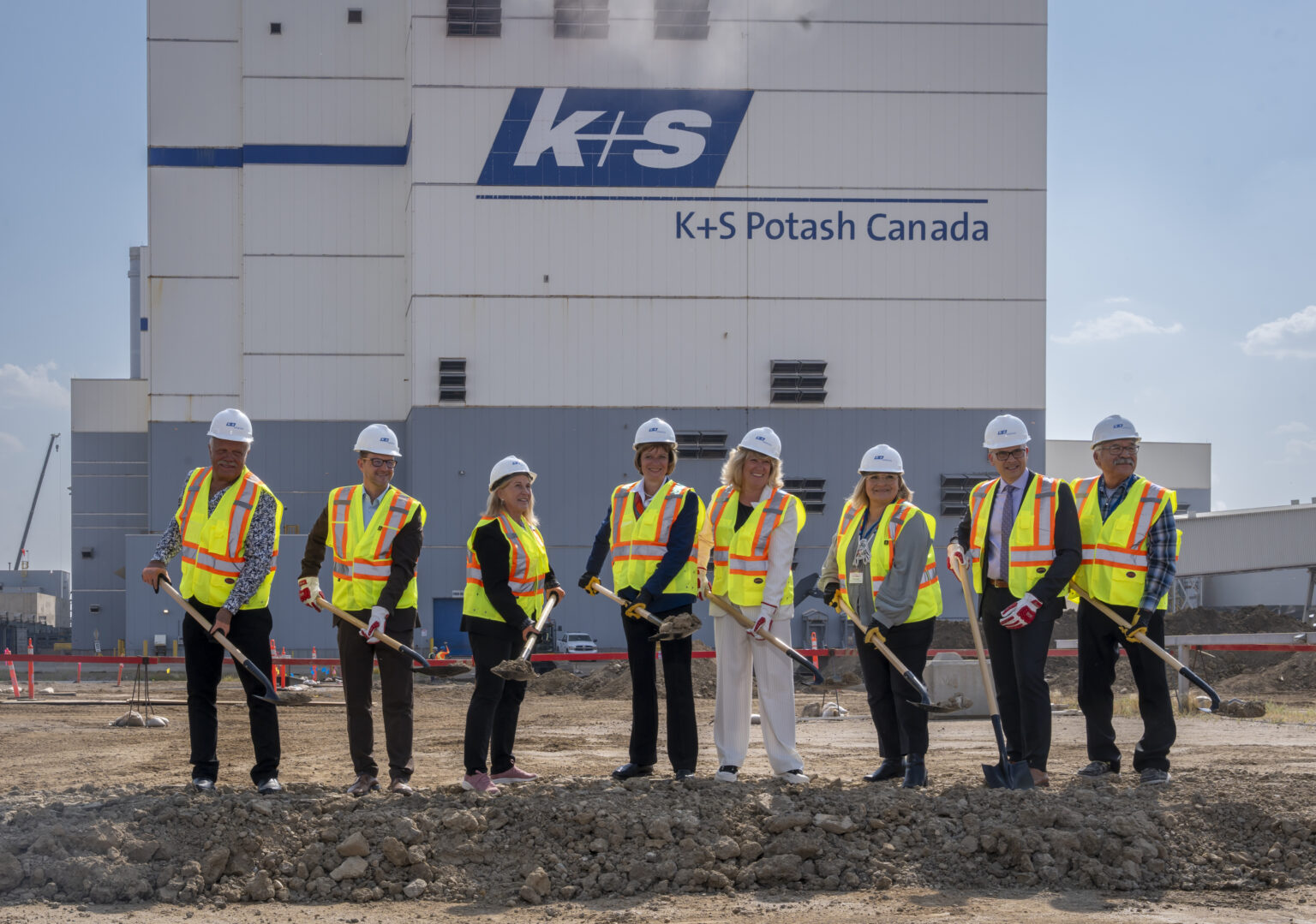Nitrogen+Syngas 335 May-Jun 2015

30 June 2015
Problem No. 30: What is the best stainless steel for urea?
Ammonium carbamate is an intermediate product in the production of urea from carbon dioxide and ammonia. Ammonium carbamate is very corrosive under the synthesis conditions in a urea plant. The various process licensors have developed different solutions to assure sufficient safety and reliability levels. In the early days titanium and 316L Urea Grade stainless steels were applied. The process conditions in the high pressure stripper are the most severe, i.e. the highest temperatures and lowest oxygen partial pressures are present. A new stainless steel 25-22-2 with a higher chromium content was developed specifically for the high pressure CO2 stripper. Super duplex materials like Safurex® and DP28W™ and Omega-Bond™ (a combination of zirconium with titanium) are the latest developments and have proven to be better than earlier materials, but what is the best material?
Mr Janusz Mac´kowski of Zch Police in Poland starts the Round Table discussion: What is the best material for the stripper (tubes and liner) and the other synthesis equipment in a urea plant: Safurex®, Super duplex, DP28W™ (Sumitomo), bimetallic with Zr/25-22-2, any others? What is the actual level of oxygen they need? What is the best material for the urea reactor liner?
Mr Mark Brouwer of UreaKnowHow.com in the Netherlands responds: Maybe titanium should also be on your list. In addition, Saipem has developed a new type of tube material for the stripper (Omega-Bond™). Looking at the “best” materials I believe several different aspects are important:
- intrinsic resistance against corrosion (for example zirconium is better then 25-22-2)
- need of oxygen for passivation
- weldability (here zirconium is much worse)
- sensitivity to problems like erosion, H2 embrittlement, chloride SCC, crevice corrosion (bimetallic) etc.
- price
- references.
Considering all these, Safurex® is in my opinion the best choice for urea synthesis conditions. It also has the potential to work under zero oxygen conditions.
Janusz replies: Thank you for your reply. Omega-Bond™ is bimetallic (Ti/Zr). I know that Safurex® is very good. Super duplex with tungsten is also very interesting (DP28W™). I think this material could have similar features to Safurex® (or even better) but it is quite a new material (very few references in comparison to Safurex®). Does anyone have experience with this material?
Mr Waqqar Ahmed of Fauji Fertilizer Company Ltd. in Pakistan joins the discussion: Saipem’s technology uses 316L Urea Grade (UG) or Modified (Mod) and 25-22-2 and 0.35 vol-% of oxygen in CO2 feed is sufficient for passivation. We have experience of both titanium and bimetallic (25-22-2/Zr). Titanium has excellent corrosion resistance but it has erosion problems. With additional passivation air at the bimetallic urea stripper bottom, we found no problem even when operating at 205-206°C. 3 ppm of oxygen at the stripper bottom is enough for passivation of 25-22-2 tube sheet and tube ends. Safurex® has excellent corrosion resistance, but can it sustain its corrosion resistant properties at temperatures up to 205-206°C without passivation air? With Omega-Bond™ strippers Saipem claims the stripper bottom can even be operated at a temperature of 210°C.
Mr Fabiano Parizotto of Petrobras in Brasil shares his experiences: Take care with Safurex®, because one can find corrosion in machined parts which have suffered during the fabrication process. This corrosion phenomenon is called “stern face corrosion”. This corrosion occurs due to the break of grains, which reduces the corrosion resistance. Check parts such as the hole in tubes, dividers or clips to attach trays, etc.
Mark replies: It was indeed true that the first generation Safurex® was more sensitive to cross cut end (or stern face corrosion). In the later generations Safurex® this problem has been solved. Further, a Safurex® stripper was successfully in operation at the Saipem urea plant of Profertil in Argentina and is now in operation at Agrium Redwater in Canada, so yes Safurex® can also handle 205-206°C. I do not know whether these plants had extra passivation air injection on the stripper.
Mr Jan Cervenka of Chemoprojekt Nitrogen in Czech Republic asks some questions: Is it possible to protect the machined parts Fabiano refers to, e.g. by some kind of grinding (mechanical way) or pickling (chemical way)? What can be done at the workshop (after machining/welding) and what can be done with already corroded surfaces?
Mr Eddie Canadilla of SAFCO in Saudi Arabia adds: How does Safurex® handle stern face attack (or cross cut end attack) where other urea grade stainless steels are not so effective? Mark replies: Grinding or pickling can be used to remove oxides, which occur after machining or welding. Removal of these oxides is important in order that a proper passivation layer can built up as explained in one of Giel Notten’s Technical Papers (for example UreaKnowHow.com Mechanical Paper February 2009). This is applicable for austenitic stainless steels like 316L Urea Grade (UG) or 25-22-2 usually applied in urea plants. Also after severe active corrosion of these materials it is advisable to apply picking to remove these excessive corrosion products and enable the build up of a proper passivation layer. Safurex® is a duplex stainless steel, a mixture of austenite and ferrite material and more specifically the Safurex® structure is such that there are austenite islands in a ferrite matrix. Passivation is therefore not necessary any more (Safurex® urea plants may not need oxygen for passivation). In first generation Safurex® this structure had not been optimised at cross cut ends. In later generations it was improved and better fabrication procedures were developed to minimise the problem of cross cut end corrosion.
Mr Muhammad Kashif Naseem of SABIC in Saudi Arabia shares his experiences: Toyo Engineering Corporation (TEC) uses DP28W™ material for the stripper tubes, the tubesheet carbamate side and the liner in the top and bottom chamber of this stripper in ACES21 technology. There is also very good experience with this material and it shows better corrosion resistance.
Janusz requests more information: I would like to know the corrosion rate for different urea stainless steels, especially for the following: 316L UG, 25-22-2 and Safurex®.
Mark replies: All corrosion rates strongly depend on temperatures. In addition, we should make a distinction between passive corrosion rates and active corrosion rates.
As a rough guide passive corrosion rates of the tubes in a high pressure CO2 stripper are:
BC.05 (25-22-2): 0.06-0.07 mm/yr
BE.06 (Safurex®); 0.05-0.06 mm/yr
Further, the sensitivity for active corrosion for the various materials is as follows:316L UG > 25-22-2 > Safurex®. And then we can distinguish for chloride SCC: Safurex® not sensitive and 316L UG and 25-22-2 sensitive.
Janusz asks: Does anyone know the corrosion rate of 316L material for a HP CO2 stripper and reactor? Can AISI 904L (1.4539) material be used in urea synthesis (especially for renovating valves)?
Mark replies: 316L material or 316L UG can be used efficiently in urea reactors. Corrosion rates vary between 0.2 and 0.05 mm per year on stream (pyos). Whether 316L can be used depends on the amount of alloying elements. Cr and Mo play a very important role and of course the carbon content, the higher the Cr content in combination with a low carbon content gives the best results and that is obvious when you review the chemical composition of the urea grade 316L types. A regular 316L may end up with corrosion rates of over 0.5 mm pyos and in the worst case up to 2 mm per year. Also welding 316L will have a negative effect on selective corrosion as there is weld decay and sigma phase. As regards 316L in strippers, the wall temperature in a stripper is far too high for even a Urea Grade 316L type, the first HP CO2 strippers had 316L UG tubes and the tubes lasted only a few months. This material is completely inadequate for stripper tubes. Lliner overlay welds and internals can be made in Urea Grade 316L but with the addition of sufficient oxygen. Cross cut end attack is greater for all austenite and austeniticferritic (duplex) materials higher than surface corrosion. For duplex this attack is greater due to the micro structure of these materials. When discussing Safurex®, the surface attack looks higher because the surface attack is negligible here. The cross cut end attack is not higher than for other duplex materials.
AISI 904L is not a good material for urea service, it is relative low in Cr and very high in Ni. It can be compared with Sandvik type 2RK65 and is useful in a seawater environment Mr Pradeep Pednekar of RCF Ltd Thal in India shares his experiences: We have Saipem technology in our urea plants 3 x 1,725 t/d design capacity. In Saipem plants 316L UG and 25-22-2 (2RE69) are used and 0.35 vol-% oxygen in the CO2 feed is sufficient for passivation. Previously we were using titanium strippers. Titanium has excellent corrosion resistance but it has problem with erosion. With bimetallic strippers passivation at the bottom of the stripper is a must. With additional passivation air at the bimetallic urea stripper bottom, we experienced no problems even when operating at 205-206°C. 3 ppm of oxygen at the stripper bottom is sufficient for passivation of 25-22-2 tube sheets and tube ends. For high pressure carbamate condenser tubes 25-22-2 is the best.
Janusz asks some more questions:
- What is the safe minimum thickness of the reactor liner with 316L UG stainless steel?
- What level of nickel (Ni) in urea solution from the urea reactor (316L UG) is normal and what level of nickel is emergency?
- What is an average lifetime of urea reactor liner (316L UG)?
Mr Prem Baboo of National Fertilizers Ltd. in India shares his experiences: In our Saipem urea plant, commissioned in April 1987, the reactor liner thickness is still 6.8-7.1 mm. If one regularly checks the weep holes, performs maintenance during the shutdown (dye penetrant test and pitting maintenance), etc. then the life of urea reactor can be increased. Passivation air flow i.e oxygen in the 3rd stage compressor should not be less than 0.35%. The top temperature of the reactor should not exceed more than 190°C. The level of nickel (Ni) in urea solution from the urea reactor (316L UG) is 40-45 ppb. Below is an overview of the various materials applied in carbamate service in urea plants.
Titanium: Titanium is used in the relatively pure state. It has excellent corrosion resistance but is one of the more costly materials and more difficult to weld. The corrosion resistance of titanium is due to the impervious oxide film i.e. 100% TiO2 film on the surface. Titanium is resistant to stress-corrosion cracking and erosion corrosion, but is susceptible to crevice corrosion in stagnant chloride solutions. Titanium was used for the lining and tube material of the high pressure NH3 stripper in Saipem urea plants. Commercially pure titanium exhibits a high resistance to pitting attack. Titanium has also been used for the lining of urea reactors in TEC urea plants. The advantages are that less passivation air is required compared to other stainless steels and the HP NH3 stripper bottom temperature in the urea plant can be kept at temperatures of up to 210°C while with a bimetallic stripper the temperature cannot be raised beyond 207°C. The disadvantages are that titanium is not maintenance friendly due to the difficulty in welding and erosion of tubes ends resulting in bypassing in the stripper due to tube end over ferrules badly eroded by carbamate solution.
Zirconium: The corrosion resistance is because of the ZrO2 layer. Zirconium is more expensive than titanium (roughly twice that of titanium).
316L UG and 25-22-2: These are tailor made grades of austenitic stainless steel to suit required specifications of licensor. The rate of corrosion as per the Huey Test is as follows:
Material Corrosion rate (mm/yr)
Zirconium 0.005
Titanium 0.06
25-22-2 0.3
316L UG 0.6
Duplex stainless steels: Duplex steel is characterised by a micro-structure containing both a ferritic phase with a BCC crystallographic structure and an austenitic phase with a FCC structure. The ferritic phase is normally 40-60%, mainly introduced in the wrought alloys by a careful balance of the critical alloying elements. It has a higher strength and better resistance to chloride stress corrosion cracking.






